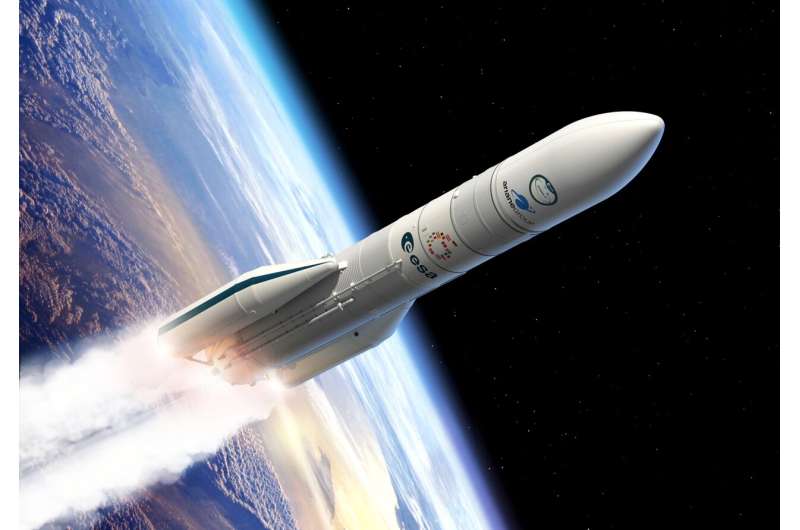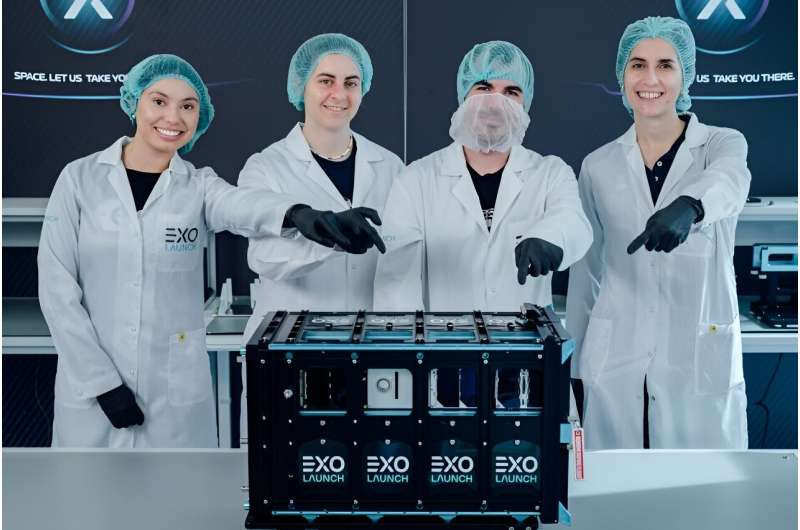This article has been reviewed according to Science X's editorial process and policies. Editors have highlighted the following attributes while ensuring the content's credibility:
fact-checked
trusted source
proofread
Ariane 6 launches: Exolaunch's EXOpod Nova

Europe's newest rocket soon launches, taking with it many space missions each with a unique objective, destination and team at home, cheering them on. Whether launching new satellites to look back and study Earth, peer out to deep space or test important new technologies in orbit, Ariane 6's first flight will showcase the versatility and flexibility of this impressive, heavy-lift launcher. Read on for all about EXOpod Nova, then see who else is flying first.
Many missions will be hitching a ride into space on Ariane 6's first flight, but how do you ensure each one is launched from the rocket at the right time and in the right direction? The orchestration of these missions falls upon the shoulders of satellite deployers, tasked with releasing the satellites at the right time.
One of these deployment systems flying on Ariane 6 is from Berlin-based Exolaunch, a global provider of launch services, mission management, satellite integration, and deployment hardware that has successfully deployed over 360 satellites across 25 missions to date.
EXOpod Nova deployer
For Ariane 6's historic first flight, the company's EXOpod Nova deployer will carry four CubeSats into space. EXOpod Nova, the size of compact carry-on luggage, will be placed on the Ariane 6 upper stage payload adapter. Crafted from durable yet lightweight aluminum, this deployer can securely house up to 16 units worth of CubeSats, while the deployer itself weighs less than 14 kg without them.
In a bid to accommodate all types of CubeSats, including those surpassing standard dimensions, the EXOpod Nova is designed for versatility. Exolaunch Mission Manager, Nadine Smolka, highlights the company's dedication to pushing the boundaries of satellite designs, stating, "We aim to revolutionize the industry and make it easier for our customers to explore the limits of their satellite designs."
Ariane 6 will fly with the EXOpod Nova's 16 unit version in a three-door "S3" configuration, allowing ample room for four satellites to be positioned. The deployer is intuitive and user-friendly, by design. The EXOpod Nova doors open in response to a signal sent from the Ariane 6 launcher, followed by the push mechanism that releases the satellites into their orbits.

Built in Berlin
Exolaunch's headquarters and integration facilities are located in Berlin, where the four CubeSats will be integrated into EXOpod Nova. Once complete, the unit then embarks on a transatlantic journey to Europe's Spaceport, where it will be connected to the Ariane 6 payload adapter. Nadine and other Exolaunch team members oversee the physical attachment and conduct rigorous tests to guarantee flawless functionality before liftoff.
Emphasizing their commitment to quality control, Nadine says, "For integration, and in general at Exolaunch, we work on a 'two brains, four eyes principle' to ensure quality control—a second teammate to ensure success for all critical operations."
As a German company with deep roots in spaceflight, Exolaunch takes pride in its European heritage and envisions a booming European space sector. Nadine concludes, "We want to see European space thrive, so we are very excited to see Ariane 6 launch and are honored to be on board to provide independent access to space for our customers."
Provided by European Space Agency





















